Archive of the Mendocino Heritage Artists
Fran Moyer (1922-2007)
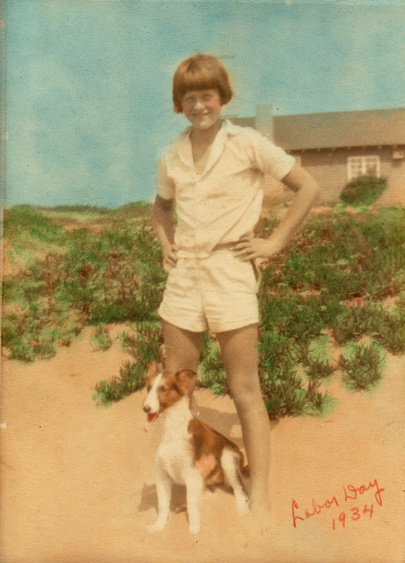
Fran Moyer, named for her father Francis Moyer, was born in Southern California, the only child of an unhappy mother, raised largely by her father’s emotionally distant unmarried sisters. She was 15 when her mother died, and her father followed two years later. The orphaned Fran supported herself pumping gas at a gas station.
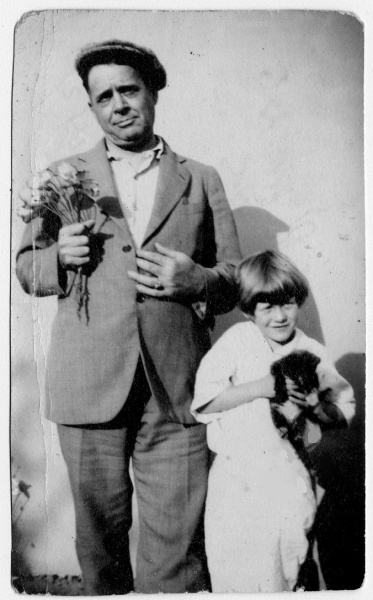
The precociously sophisticated editor of her high school newspaper at Manual Arts High School in Los Angeles, Moyer planned to be a writer, and although she wrote and published throughout her life, serious poetry, satire, news articles, and stories for children, her career in art surprised her and for a time, at least until she disappeared into Mendocino, it dazzled the art world.
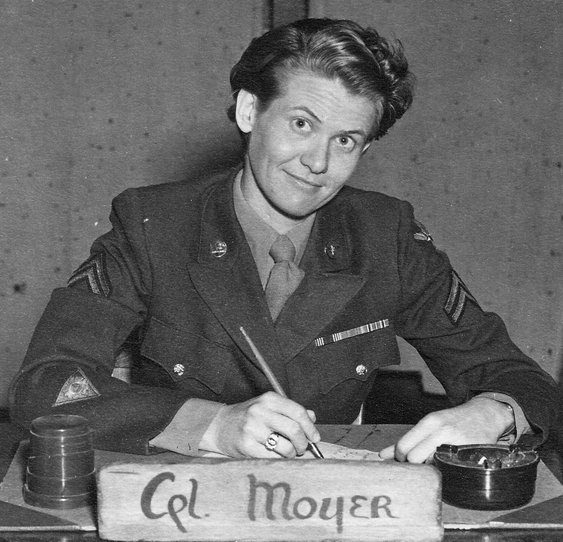
In 1942, at the beginning of World War II, Moyer joined the United States Women’s Army Corps (WAC). Moyer said, “I wanted to get into the heat of battle, but wound up in Las Vegas as a mechanic. It was boring. We women in the corps were relegated to handing tools to the guys and sweepine out the hangar. So I hit up the crew chief to let us form a women’s crew.” Moyer, a corporal, led the team of WAC airfield mechanics.
The idea at the time, as in wartime civilian life, was to have women take over as many jobs as possible to leave men free for deployment overseas and combat. Unfortunately, the male airfield workers and pilots perceived their female colleagues as a threat. It’s possible the men were concerned that if women could replace them stateside, they themselves might be sent abroad. Whatever their reasons, instead of expressing respect and solidarity, they harassed their WAC colleagues. Moyer and her team did their work undiscouraged until the men began to sabotage any WAC work on the planes. You might have explained to the men that the United States was at war, and their insecurity had led them to actions that could be considered treason; however their superiors did not. Rather than continue in an increasingly hostile work environment, doing good work that would continue to be rendered worthless, Cpl. Moyer and her bitterly disappointed team members requested and received reassignment.
During this period, Moyer experienced a profound crisis of faith, which she resolved by converting to Roman Catholicism. While Moyer never left the Church, she felt unwelcome because of her sexual orientation. Like many Roman Catholics she found no contradiction to her faith in Buddhism, and came to find spiritual support and a measure of peace in her Buddhist practice. In her last 14 years, that peace included sobriety.
Like WW II veterans Bill Zacha and Charles Marchant Stevenson, at the end of the war, Moyer completed her education on the G.I. Bill, and in 1952 earned a Master of Fine Arts in Sculpture from the California College of Arts and Crafts, Oakland (now California College of the Arts), where she later taught.
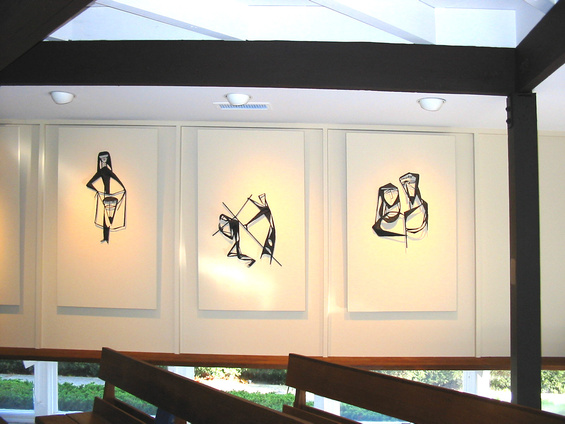
In the early 1950s, Moyer focused on liturgical sculpture, working in stone, concrete, hand-carved wood, and in welded steel. Her award-winning welded steel Stations of the Cross, installed at Saint Anselm’s Episcopal Church in Lafayette, California, came from this upwelling of creativity.
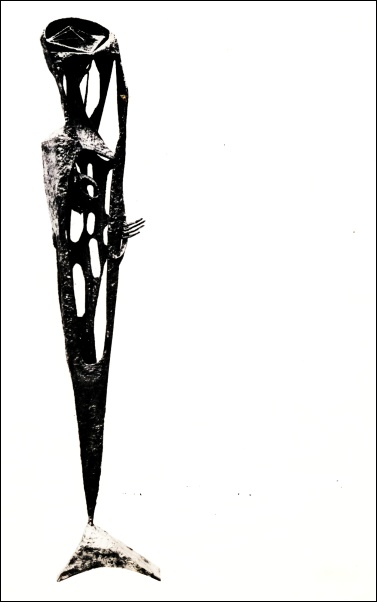
Throughout the 1950s, Moyer’s rigorous and innovative sculpture won awards and critical acclaim, and was exhibited in galleries and museums nationwide and abroad, including exhibitions at the deYoung Museum and the Metropolitan Museum of Art, The Museum of Contemporary Crafts (New York), Instituto Guatemalteco Americano, and two solo exhibitions at the Oakland Museum of Art (the Oakland Museum of California since of 1969).
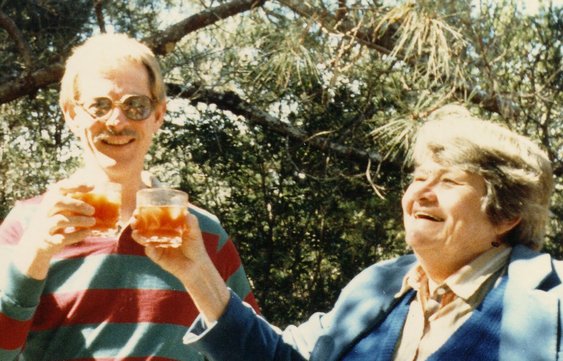
In the late 1950s, artist friends Harry and Jean Crotty, the couple who first brought Bill and Jenny Zacha to Mendocino, introduced Moyer to Mendocino, and made her welcome at their place on Chapman’s Point, just south of the village. Soon the Mendocino Coast would become Fran Moyer’s home. For years she lived and worked at the Pumpkin House on Little Lake Street in Mendocino village, then built her house/studio in Caspar.
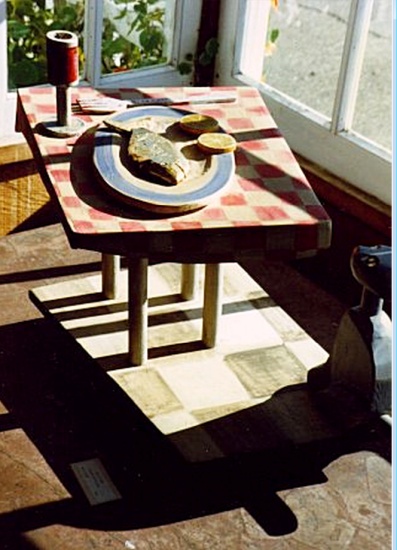
At the same time Moyer started teaching at the Mendocino Art Center, her sculpture began to exhibit the ironic, puckish humor which characterized almost all her later work, including the small format watercolors for which she achieved a second generation of fame, the manic geese, distracted sirens, and plump red cows of her Caspar Pond series, her cheerful illustrations of the bloody mayhem of Greek myths and her comic, closely observed cats.
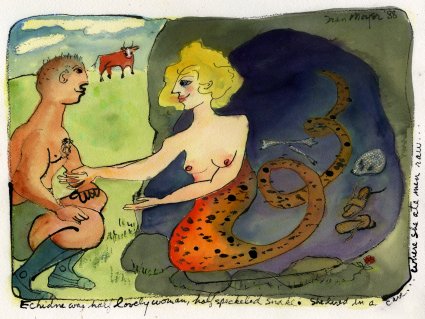
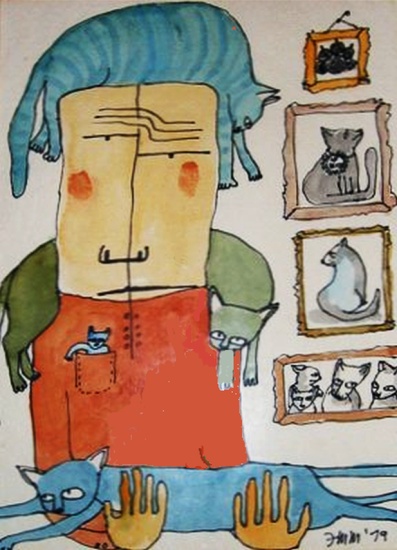
In the 1970s an alter-ego emerged, the irascible Honey Glumm, author of satiric comment on Mendocino village life, and author/illustrator of Honey Glumm’s Tales for Kiddies. The Tales appeared serially in The Big River News, published by Deborah Hammermesh White.
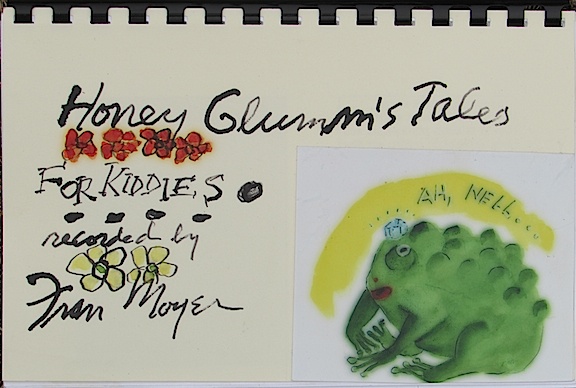
In 2002 the Tales were published in a limited edition book by Connie Korbel-Mickey, Hilda Pertha’s biographer, and former editor of the Mendocino Beacon and the Fort Bragg Advocate News.
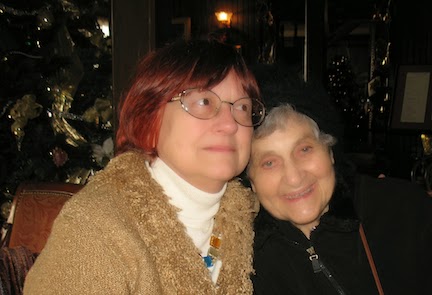
Korbel-Mickey also curated Fran Moyer’s 2002 retrospective at the Mendocino Art Center.
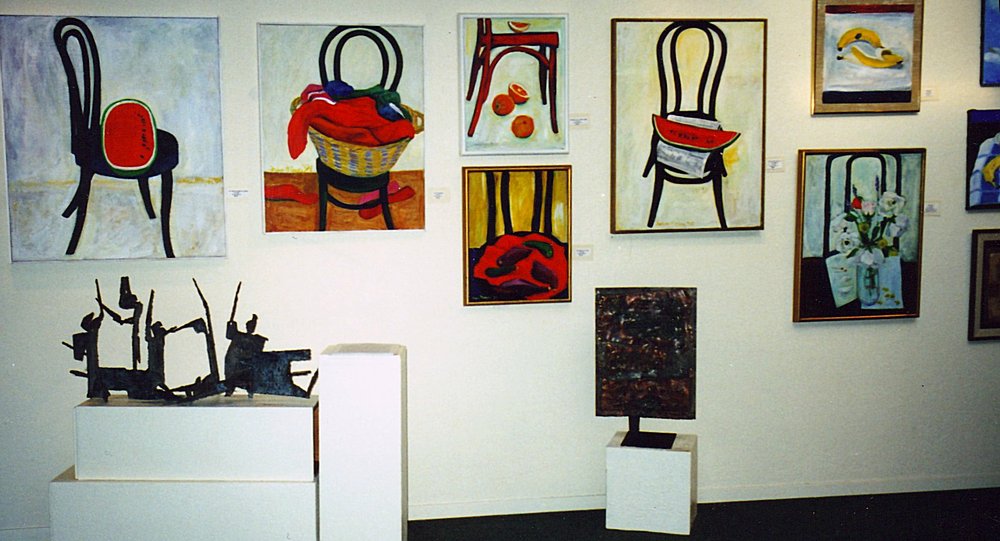
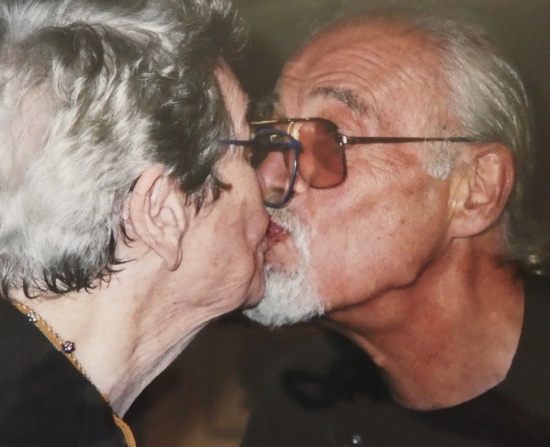
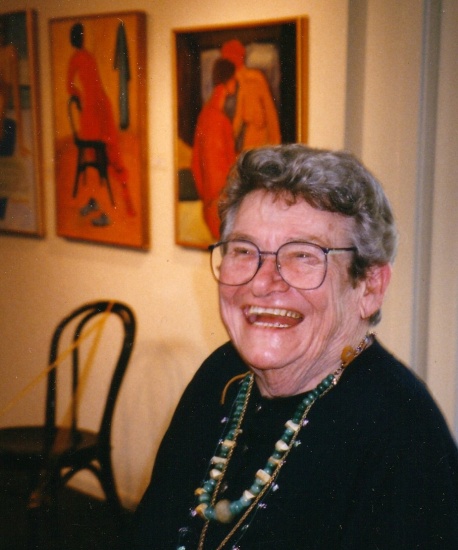
Fran Moyer died on Sunday January 7, 2007, four of her closest friends at her side to keep her comfortable during her last three days. Moyer’s passing, her service to her country, and her life were celebrated in the tiled courtyard of the Zacha Sculpture Garden at the Mendocino Art Center.
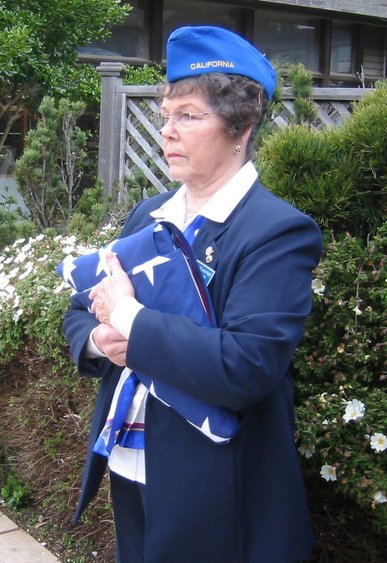
First, Moyer was accorded full military honors by American Legion Sequoia Post 96, including a three gun salute. The folded memorial flag was received by Moyer’s Caspar neighbor, her friend, and in her last years, her home caregiver, Elizabeth Freeman.
Then a service was held by the Rev. Marianne McGee, who had spent one stretch of 4o hours straight at Moyer’s bedside vigil. The service included the dedication of a new courtyard tile in Moyer’s honor. Afterward, everyone went inside to see an exhibit of Fran Moyer’s artwork, and to share beautiful food and many stories.
The tile can be found next to a memorial tile for Moyer’s old friend, Mendocino painter Jim Bertram (1920-2006).
Sculptor Bella Feldman wrote, “…Fran was an important person to me when I was beginning my studies in sculpture, and she was a vivid personality I remained fond of. We didn’t see each other often, but we stayed in touch. I am sorry she’s gone – yet it is amazing to me that she lived to be 85. She spent so many years in self-destructive ways…”
Like most, Fran Moyer’s life had its light and its shadows, but she had a gift for friendship, she never regretted making her home on the Mendocino Coast, and her joy in her art never flagged.
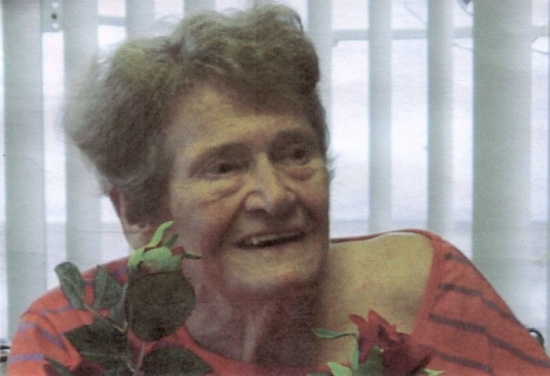
THE CIGAR STORE INDIAN: Mendocino old-timers will remember Moyer’s handcarved lifesize Cigar Store Indian standing sentinal at the entrance to Zacha’s Bay Window Gallery from 1964 until the mid-1980s when the sculpture disappeared.
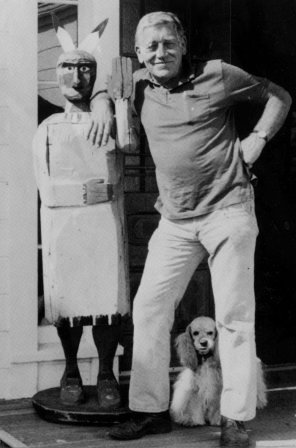
Whether the sculpture was taken as a souvenir, or in protest against the mainstream insensitivity and cultural disrespect things like this represent, or whether it was grabbed for a beach bonfire, Bill Zacha’s daughter Lucia says the loss broke her father’s heart. She offers a reward for a safe return. Contact archivist@williamzacha.com
Carol Goodwin Blick, Archivist
The Mendocino Heritage Artists
LINKS
Fran Moyer CV
Artist’s Statement
Fran Moyer: Artwork
The Mendocino Heritage Artists
Welcome!